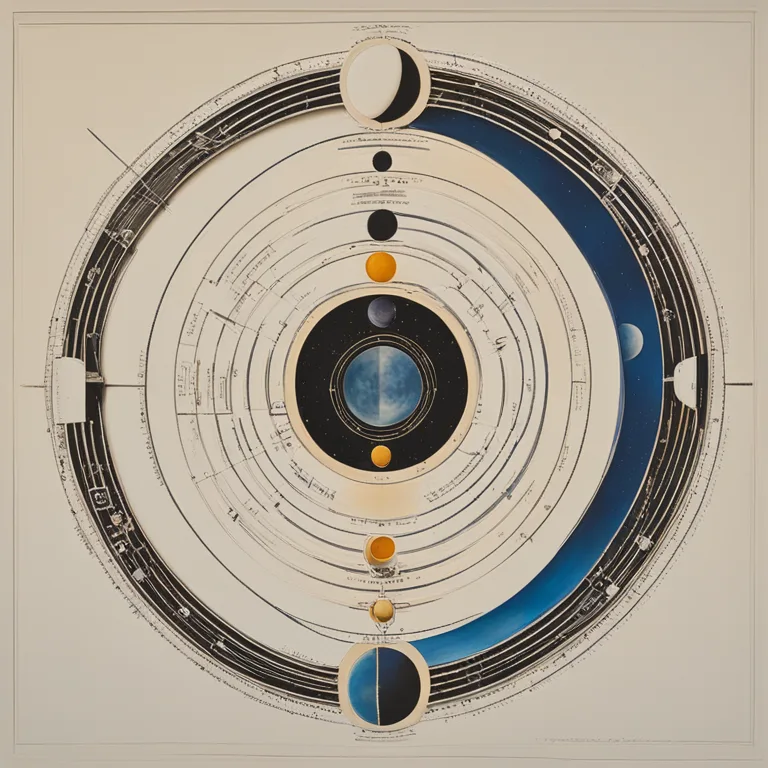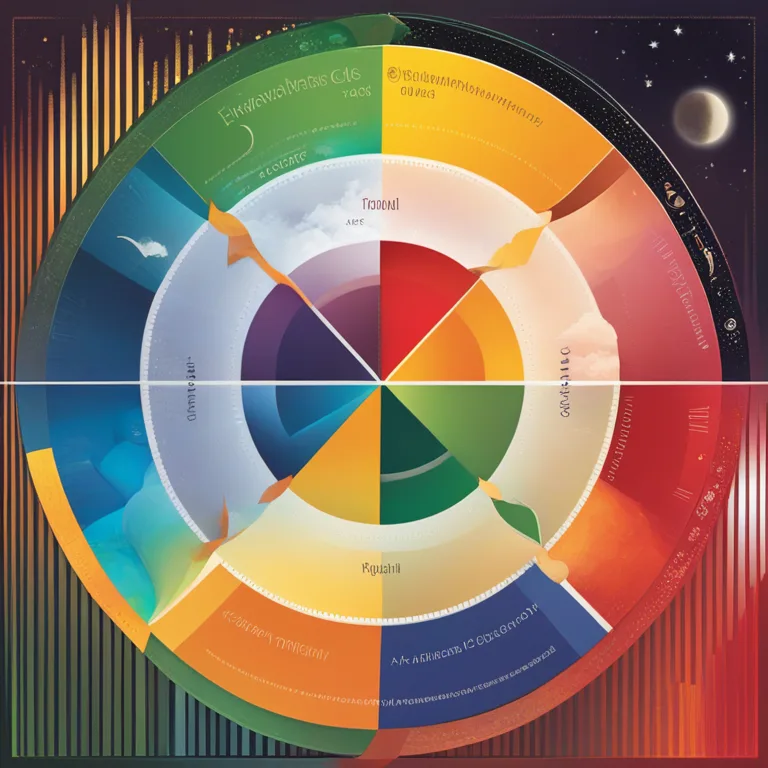
Biorhythms: The Mysteries Of Your Natal Moon
Delve into the mysteries of your natal moon's biorhythms and how they influence your emotional ebb and flow.
article by Adrian Wallace
Introduction to Natal Moon Biorhythms
The natal moon holds a special place in astrological studies, offering insights into our emotional landscape and intuitive side. But beyond its position in astrology, the biorhythms of the natal moon suggest a deeper, rhythmic pulse to our emotional energy levels. According to biorhythm theory, we are influenced by biological cycles from the moment of our birth. Primarily, these involve physical, emotional, and intellectual cycles. Understanding our natal moon's connection to these biorhythms can provide us with a roadmap to our inner emotional tides.

The Lunar Cycle and Biorhythms
The moon's cycle around the Earth resonates with the emotional biorhythm cycle that lasts 28 days, mirroring the lunar month. It is believed that at the moment of our birth, the phase of the moon kick-starts our emotional biorhythm. As the moon waxes and wanes, so do our emotional highs and lows. By tracking the moon's phases and aligning them with the date of our birth, we can anticipate periods of emotional stability or turbulence, potentially impacting our relationships, moods, and decision-making processes.

Mapping Emotional Ebb and Flow
To harness the power of our natal moon biorhythm, one must calculate the emotional cycle based on their birth date. This cycle comprises high and low halves, each lasting approximately 14 days. During the high phase, we may feel more emotionally resilient and socially engaged. The low phase, conversely, can signal a time for introspection or heightened sensitivity. By foreseeing these phases, we can schedule important events or social interactions when our emotional energy is peaking, and lay low when it's not.

Integration with Modern Life
In the fast-paced world of 2024 and beyond, tailoring our schedules to fit our biorhythms might seem challenging. However, even rudimentary awareness of your cycle can have practical applications. It could influence when to undertake emotionally demanding tasks, when to engage in important discussions, or when to embark on new projects. This awareness promotes a more harmonious existence that respects our natural fluctuations.

Critical Days and Their Significance
The concept of 'critical days' arises from the transition points between high and low periods of the emotional biorhythm cycle. These days may be marked by emotional unpredictability and a heightened probability of erratic moods. Planning ahead for critical days can encourage us to adopt coping strategies, such as meditation or a lighter schedule, to mitigate potential emotional upheaval.
Scientific Skepticism and Personal Experience
While biorhythms are a popular subject in alternative and holistic circles, it's important to note the scientific community often views them with skepticism due to a lack of empirical evidence. As such, the wisdom of the natal moon's biorhythms should be taken as a personal tool for self-reflection and not a strict science. Many individuals find that tracking their emotional biorhythm cycles helps them understand personal patterns and live more synchronously with their intrinsic nature, even if the evidence remains anecdotal.
Embracing Your Unique Cycle
Ultimately, your natal moon's biorhythms offer a unique lens through which to view your emotional world. Whether or not science validates these cycles, if you find value in observing them, they can foster a greater connection to yourself. By embracing your individual rhythm, you can navigate life's ups and downs with more grace and personal understanding.
Published: 12/28/2023
Modified: 12/28/2023
More predictions
Come back here soon to learn more about yourself and your future


The Concept of Biorhythm Compatibility
Discover the concept of biorhythm compatibility and its role in personal relationships in this comprehensive guide.


The Rhythms of Life: Delving into Biorhythm
Discover how biorhythm cycles influence your physical, emotional, and intellectual wellbeing, and how to track these patterns for optimal living.


The Origins of Biorhythm Theory Explored
Discover the historical and scientific roots of biorhythm theory, the concept that seeks to predict personal cycles of health, emotion, and intellect.